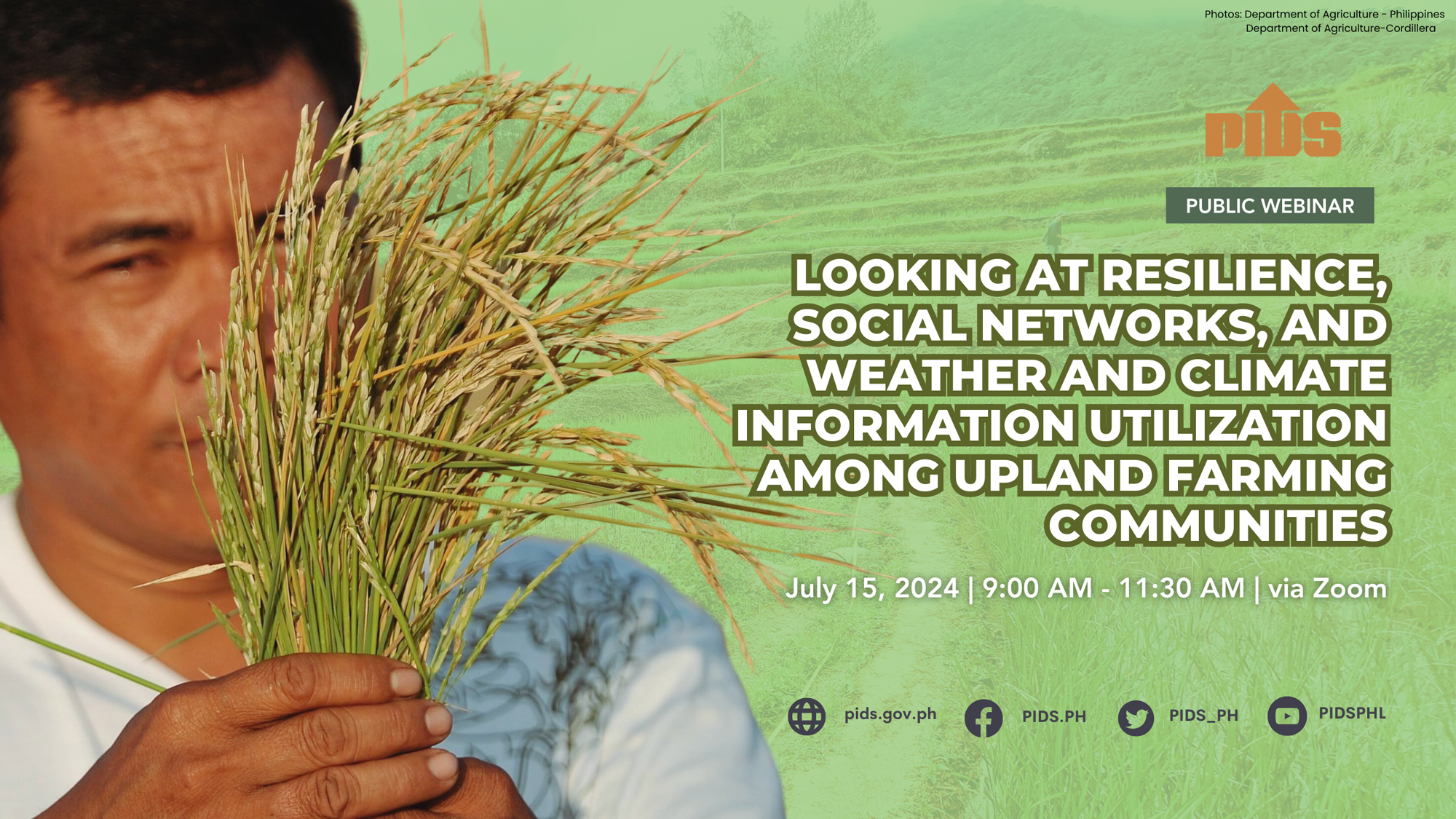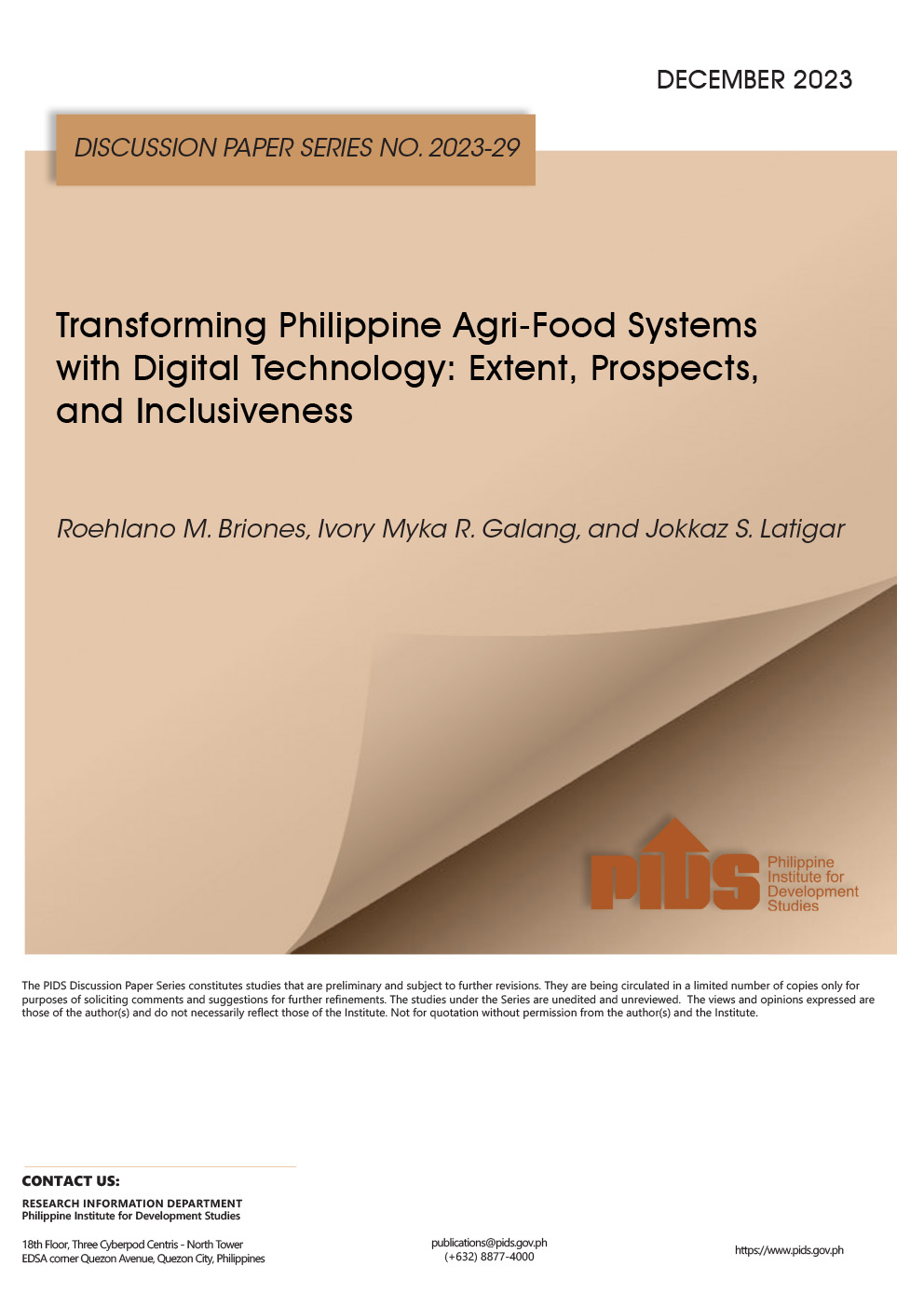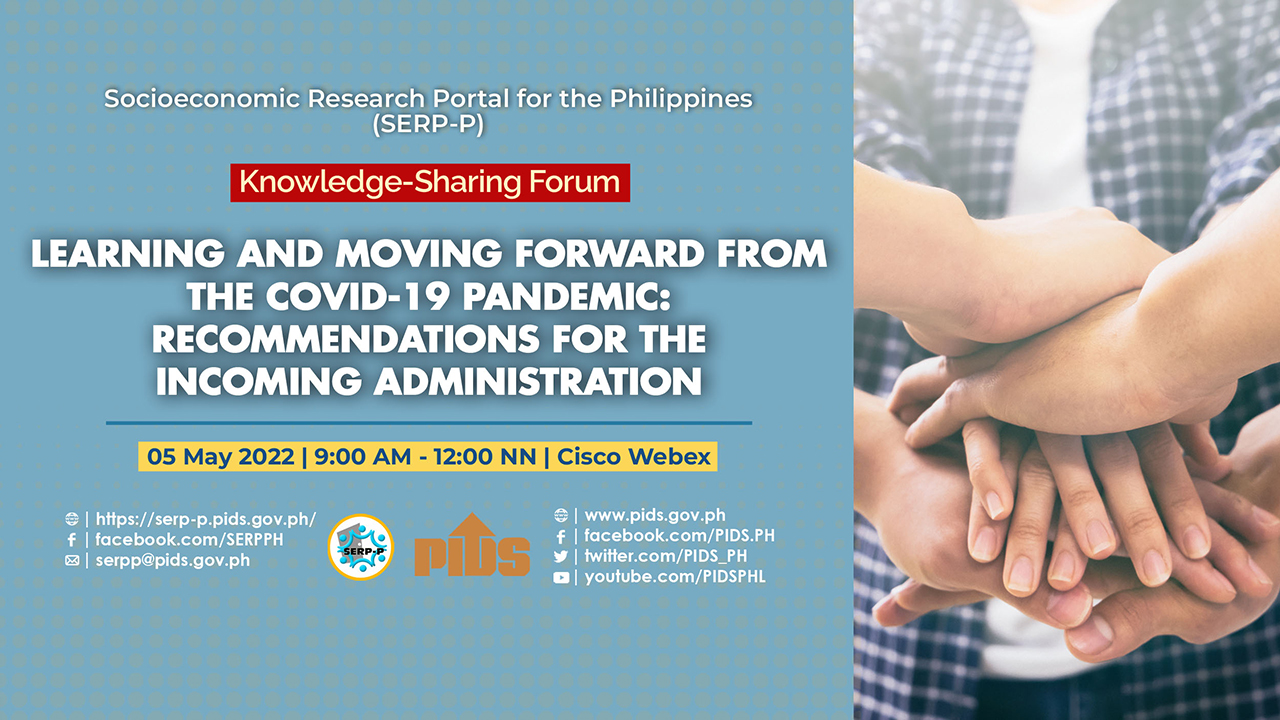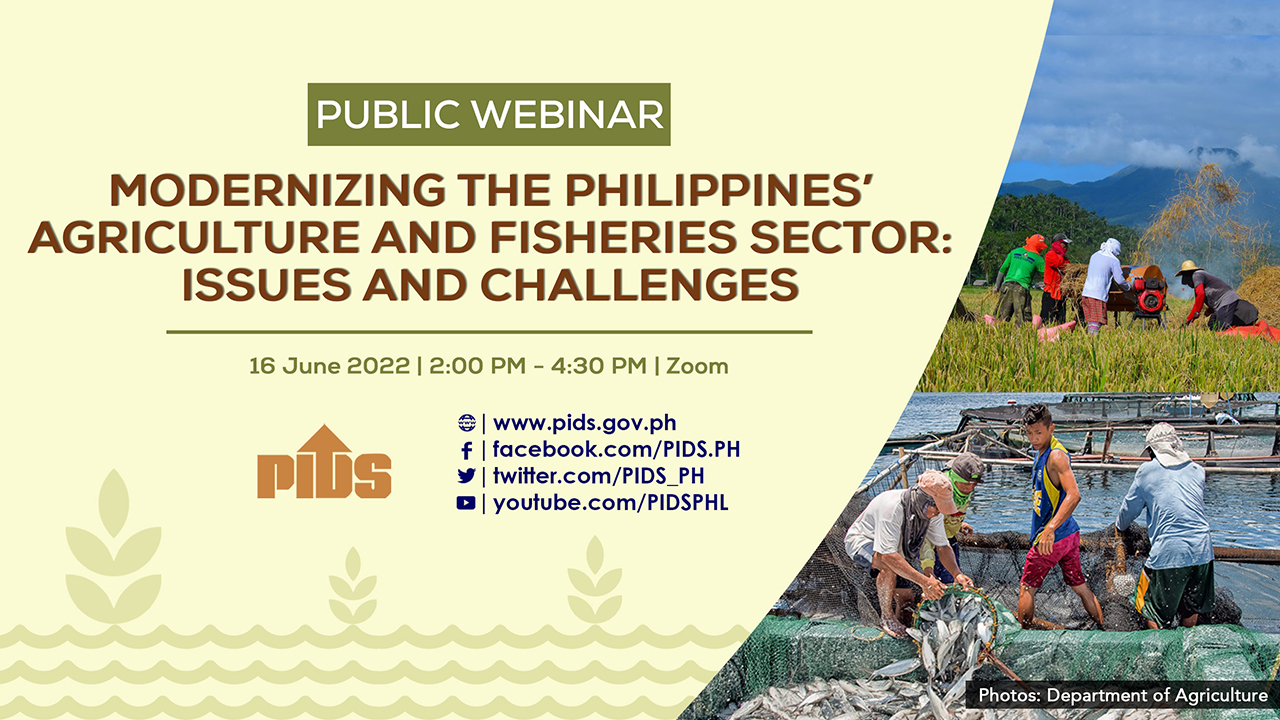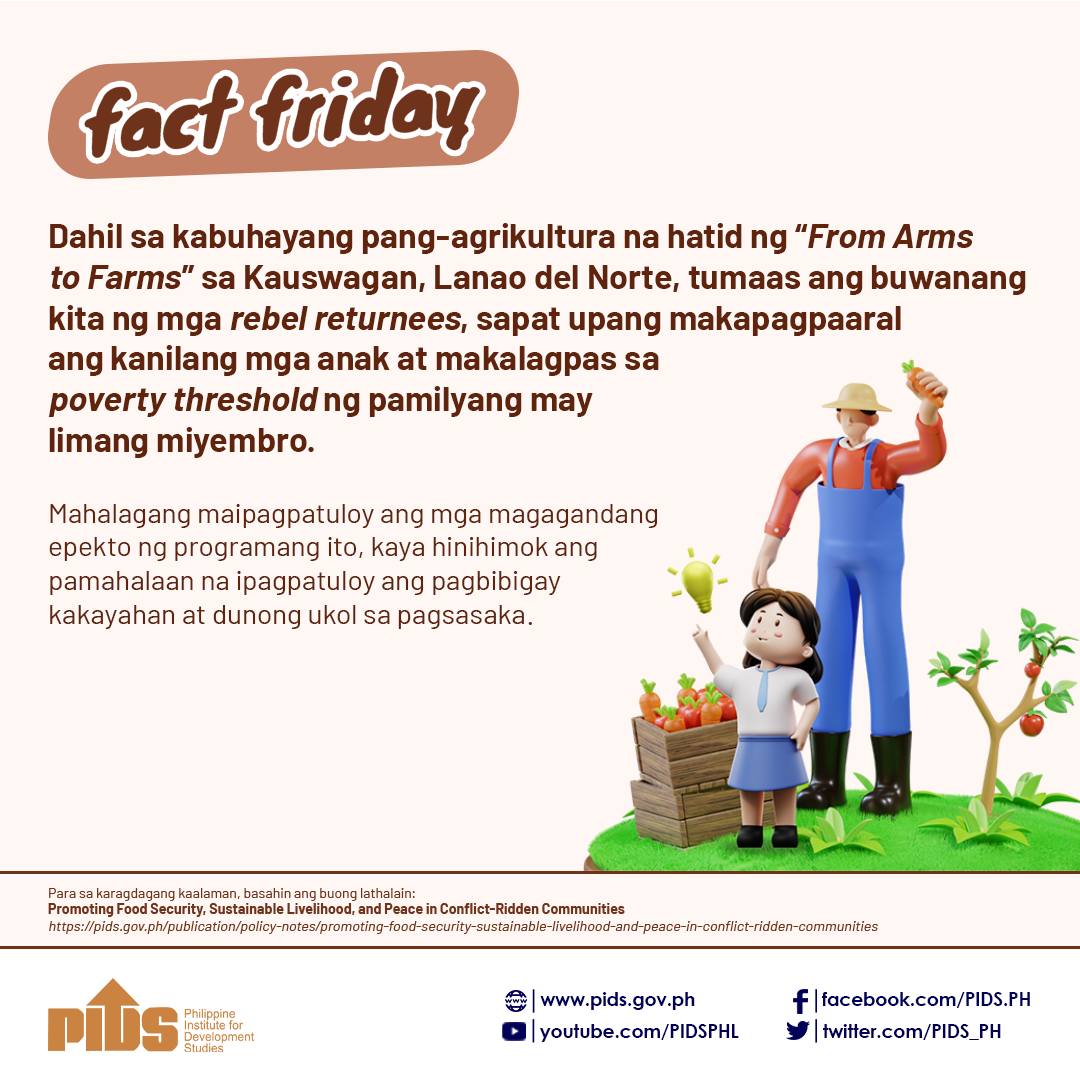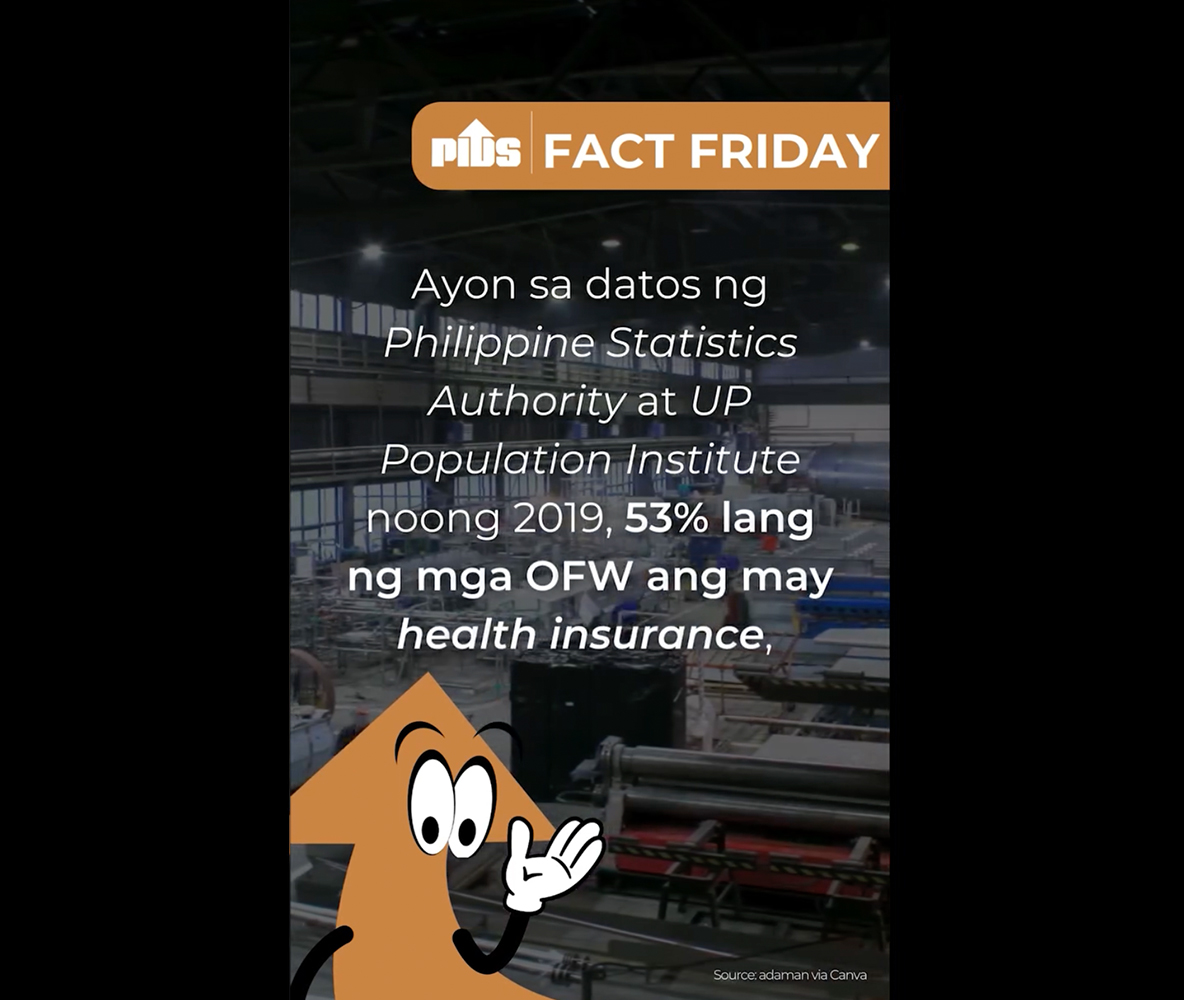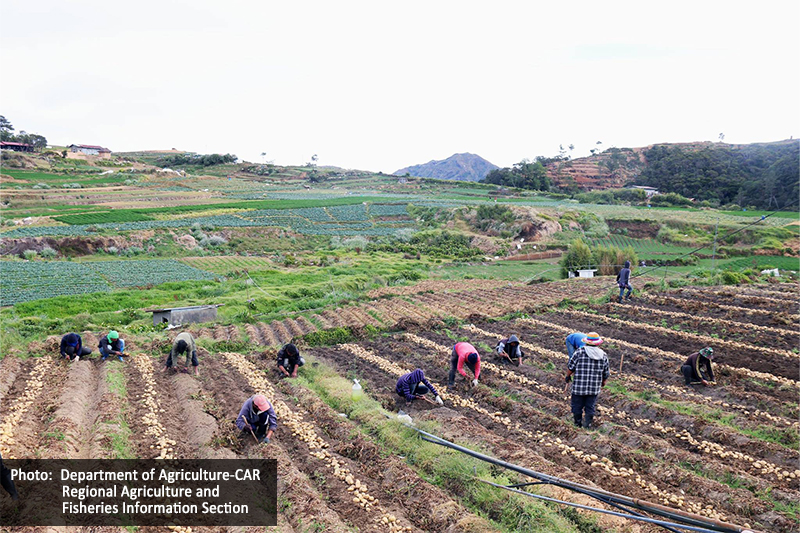
Accessing timely weather and climate information in remote upland areas presents significant challenges. This underscores the pivotal role that central actors play in upland farming communities. Central actors serve as crucial hubs in social networks, benefiting farmers and communities with their ability to swiftly relay vital information due to their proximity and mobility.
These were highlighted in a study conducted by the Philippine Institute for Development Studies (PIDS), titled “Social Networks and Access and Utilization of Weather and Climate Information: The Case of Upland Farming Communities in the Philippines”, authored by PIDS Senior Research Fellows Drs. Aubrey Tabuga and Sonny Domingo, along with former Research Analysts Anna Jennifer Umlas and Katrina Mae Zuluaga.
“Physical proximity and mobility are likely to be the key determinants of centrality, with central actors living near venues of interaction,” explained Tabuga in her presentation of the study in a recently conducted PIDS webinar. She highlighted that central actors, often residing near community interaction points, play a critical role in facilitating effective information dissemination, especially for weather and climate information.
The study examined three sitios in Atok, Benguet, revealing challenges in engaging both central and peripheral nodes to ensure comprehensive information coverage. These challenges are exacerbated by poor signal reception and rugged terrain that isolate households and hinder the dissemination of crucial weather and climate updates essential for agricultural planning and disaster preparedness.
Network disparities pose obstacles to information flow, particularly for isolated individuals lacking robust social connections. For instance, Sitio Macbas, despite being the most remote, demonstrates strong social cohesion, whereas Sitio Tulodan’s larger physical expanse results in less cohesive social networks.
Tabuga also emphasized the crucial role of Agricultural Extension Workers (AEWs). Empowering central actors involves the provision of resources and technical support to enhance their ability to facilitate communication and knowledge exchange. Research findings from areas like Sitio Proper Paoay, which is closer to urban centers compared to Sitio Tulodan and Sitio Macbas, indicate that AEWs effectively engage with central actors to disseminate information.
“Contrary to expectations of clustering near the central business district, as seen in Sitio Paoay, communities can indeed be connected, offering opportunities for social influence and seamless information flow,” Tabuga noted. She stressed the importance of refining agricultural extension strategies through insights gained from social network analysis to enhance connectivity.
However, webinar discussant Adrian Chris Velasco, Information Officer at the Agricultural Training Institute Cordillera Administrative Region, raised a concerning statistic: there is only one AEW for every 1,001 farmers in Atok.
“This ratio is far less than the standard of 1 AEW to 500 farmers,” he noted, highlighting the urgent need for more actors to serve as information conduits. He also advocated for enhanced information and communication technology in the region to bridge the gap in information access.
Co-discussant Valentino Macanes, Director of the Institute of Highland Farming and Agroforestry Systems at Benguet State University (BSU), supported these insights, proposing increased AEW deployment. He also underscored the transformative potential of tailored technological solutions in building resilience against weather and climate challenges.
Experts concur on the necessity for varied information, education, and communication strategies tailored to address different social and geophysical concerns. Strengthening information flow between information sources and end users will improve agricultural decision-making and productivity, and foster community resilience.
Watch the recording of the webinar at https://bit.ly/pidslive071524. ###

